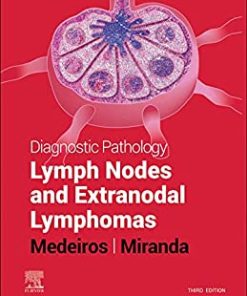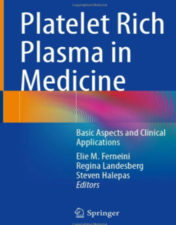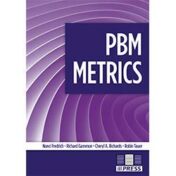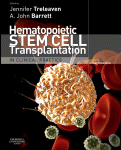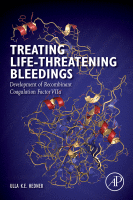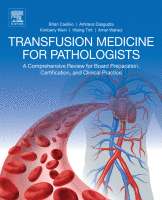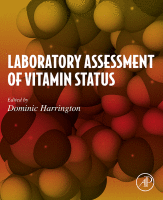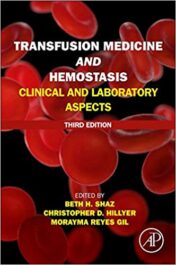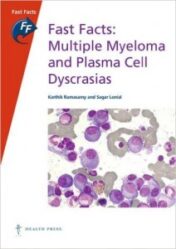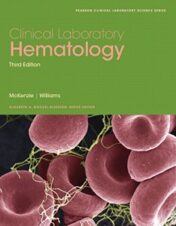Hematologic Malignancies: An Overview (ORIGINAL PDF)
$13
Hematologic Malignancies: An Overview (ORIGINAL PDF)
Ineffective hematopoiesis in bone marrow and peripheral cytopenias are features of bone marrow failure and related syndromes. These diseases can progress to myelodysplastic syndrome, acute myeloid leukemia, and other malignancies. Acute myeloid leukemia is a heterogeneous complex malignancy characterized by proliferating myeloblasts in the bone marrow and a diverse range of recurrent molecular aberrations that occur in many different combinations. More specifically, the authors explore the McDonough strain of feline sarcoma virus-related tyrosine kinase 3 receptor mutations present in about 30-35% of acute myeloid leukemia patients. The way in which the Wnt signaling pathway plays an important role in normal hematopoiesis and its deregulation associated with acute myeloid leukemia is also discussed. This compilation also explores the importance of residual leukemic cells in disease relapse prognosis, as the new definition of the European LeukemiaNet for complete remission includes minimal or measurable residual disease negativity. Mutations detected in patients with clonal hematopoiesis are addressed, including those which most commonly affect DNMT3A, ASXL1, TET2, JAK2, SF3B1, SRSF2, and TP53 genes that had previously been identified as drivers in various myeloid neoplasms. The authors provide an overview of the roles of extracellular vesicles in multiple myeloma, their capacity as emerging biomarkers, and implications for liquid biopsy for detection and monitoring. The penultimate study focuses on toll-like receptors, which play an essential role in the recognition of invading pathogens via specific microbial molecular motifs, forming a bridge between the innate and adaptive immune responses. In conclusion, this compilation explores PROTACs, proteolysis targeting chimeras, which mediate the degradation of proteins of interest by hijacking the activity of E3-ubiquitin ligases for POI polyubiquitination and subsequent degradation by proteasome.
Related Products
HEMATOLOGY Books
HEMATOLOGY Books
HEMATOLOGY Books
Hématologie: L’enseignement en fiches (Original PDF from Publisher)
HEMATOLOGY Books
HEMATOLOGY Books
HEMATOLOGY Books
Blood Cells: A Practical Guide 6th Edition 2022 Original pdf
HEMATOLOGY Books
HEMATOLOGY Books
HEMATOLOGY Books
HEMATOLOGY Books
Williams Manual of Hematology, Tenth Edition 2022 Original PDF
HEMATOLOGY Books
Hematology-Oncology Therapy, Third Edition 2022 Original PDF
HEMATOLOGY Books
Williams Manual of Hematology, 10th Edition 2022 Original pdf
HEMATOLOGY Books
Preoperative Anemia Management With Flashcard 2019 Original PDF
HEMATOLOGY Books
HEMATOLOGY Books
HEMATOLOGY Books
HEMATOLOGY Books
Blood Cells: A Practical Guide, 6th Edition 2021 Original PDF
HEMATOLOGY Books
HEMATOLOGY Books
Hematology Rapid Review: Flash Cards First Ed 2021 Original pdf
HEMATOLOGY Books
HEMATOLOGY Books
HEMATOLOGY Books
HEMATOLOGY Books
HEMATOLOGY Books
HEMATOLOGY Books
HEMATOLOGY Books
HEMATOLOGY Books
HEMATOLOGY Books
HEMATOLOGY Books
Essential Current Concepts in Stem Cell Biology 2020 ORIGINAL PDF
HEMATOLOGY Books
HEMATOLOGY Books
HEMATOLOGY Books
Workbook on Hemodynamic Management (ISCCM) (HTML-Converted PDF)
HEMATOLOGY Books
HEMATOLOGY Books
HEMATOLOGY Books
HEMATOLOGY Books
Atlas of Cardiac Catheterization for Congenital Heart Disease
HEMATOLOGY Books
HEMATOLOGY Books
HEMATOLOGY Books
HEMATOLOGY Books
HEMATOLOGY Books
HEMATOLOGY Books
HEMATOLOGY Books
HEMATOLOGY Books
Practical Flow Cytometry in Haematology: 100 Worked Examples
HEMATOLOGY Books
HEMATOLOGY Books
HEMATOLOGY Books
HEMATOLOGY Books
HEMATOLOGY Books
HEMATOLOGY Books
HEMATOLOGY Books
HEMATOLOGY Books
HEMATOLOGY Books
HEMATOLOGY Books
HEMATOLOGY Books






